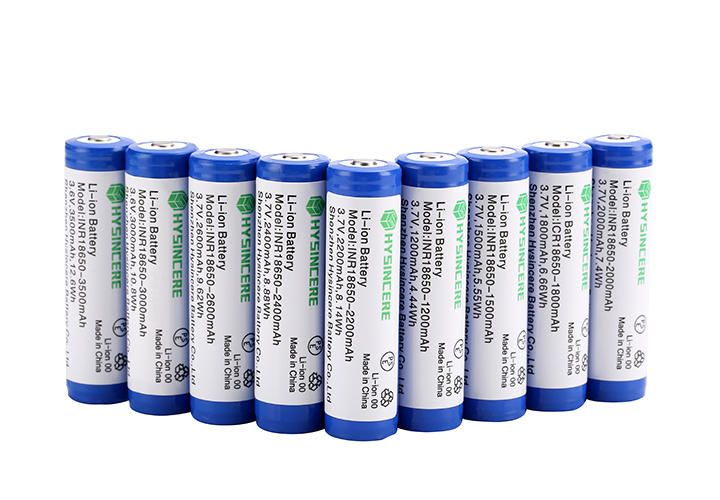source:other news
release time:2022-10-28
Hits:0
Popular:

1. The charging and discharging rate performance of lithium ion batteries is directly related to the mobility of lithium ions in positive and negative electrodes, electrolyte and its interface. All the factors that affect the speed of lithium ion migration (which can be equivalent to the internal resistance of a battery) affect the charge and discharge rate of a lithium ion battery. In addition, the heat dissipation rate inside the battery is also an important factor affecting the rate performance. If the heat dissipation speed is slow, the heat accumulated during the charging and discharging of large-capacity batteries cannot be transferred, which seriously affects the safety and service life of lithium-ion batteries. Therefore, it is of great significance to study and improve the charge-discharge ratio performance of lithium ion batteries, improve the migration speed of lithium ions and the internal heat dissipation rate of batteries. For the internal resistance of lithium ion batteries, conductive agents are usually added inside the active material of the positive electrode to reduce the contact resistance between the active material and between the active material and the collector of the positive electrode matrix, and improve the conductivity (ionic and electronic conductivity) to improve the utilization and performance of the positive electrode material. Different materials and different shapes of conductive agents will affect the internal resistance of lithium-ion batteries, and then affect their amplification performance. The positive and negative collectors (lugs) are carriers of energy transfer between lithium-ion batteries and the outside world. The resistance of the collector also has a great influence on the amplification performance of the battery. Therefore, the rate performance and cycle life of Li-ion batteries can be improved by changing the material, size, extraction method and connection process of the collector.
2. In addition, the absorption rate and porosity of the isolation membrane also have a great impact on the passability of lithium ions, and will also affect the rate performance of lithium ion batteries to a certain extent (relatively small). The penetration degree of electrolyte and anode material of lithium ion battery will affect the contact resistance of electrolyte and electrode interface, thus affecting the magnification performance of battery. The total amount of electrolyte, viscosity, impurity content and pores of anode and cathode materials will change the contact impedance between electrolyte and electrode, which is an important research direction to improve the amplification performance. The ionic conductivity of electrolytes The ionic conductivity of electrolytes is the same as the resistance of water, which has a great influence on the swimming speed of lithium ions. At present, organic electrolytes, both liquid and solid, used in lithium-ion batteries are not very ionic conductive. Electrolyte resistance has become an important part of the whole battery resistance, and its influence on the high rate performance of lithium ion batteries cannot be ignored. In addition to improving the ionic conductivity of the electrolyte, we should also pay attention to the chemical and thermal stability of the electrolyte. When charging and discharging at a large rate, the electrochemical window of the cell has a wide range. If the chemical stability of the electrolyte is not good, it is easy to oxidize and decompose on the surface of the cathode material, affecting the ionic conductivity of the electrolyte. The spread of the positive and negative lithium ion battery capacity lithium ion battery embedded embedded and the rate of the anode cathode active material, the lithium ions from the positive cathode active material in escape velocity, or are they from the positive and negative surface active material to find a stable speed, is an important factor to influence than to charge and discharge.
Read recommendations:
solar battery storage system price
20kwh 30kwh 40kwh High Power Lithium Battery 307V 100Ah For Solar Energy Storage System
Lithium battery recycling technology is immature.portable power station solar
What is UPS power supply?marine battery for trolling motor

Last article:What causes lithium batteries to overheat?
Next article:There are five common reasons lithium-ion batteries explode
related suggestion
deep cycle marine battery wholesaler
2023-03-20lithium trolling motor battery
2023-03-22lithium ion golf cart batteries wholesaler
2023-03-22solar battery storage system Vendor
2023-04-07lithium ion golf cart batteries Processing
2023-03-20lithium ion golf cart batteries direct sales
2023-03-2212v solar battery
2023-05-08best battery for solar panel
2023-05-08portable solar generator
2023-05-08solar generator amazon
2023-05-0812v 100ah battery
2023-05-08portable power station 1000w
2023-05-0812V 150Ah Rechargeable Lithium Battery for Marine Boat
2023-02-14Rechargeable Lithium Ion Battery Pack for Medical Device
2022-10-18Customize Lipo Battery Cell Pack
2025-04-1051.2V Modular Stacking Rack Mount Energy Storage System
2023-07-045kWh Household Energy Storage System 51.2V 100Ah Battery LiFePo4 for Solar Power
2022-09-29Unveiling the Power of the Samsung 50S 21700 Battery: A Deep Dive into Performance and Applications
2025-03-19A Comprehensive Guide to Golf Cart Battery Chargers: Testing, Maintenance, and Choosing the Right Plug
2025-03-14Lithium battery non graphite negative electrode.solar battery storage system
2023-10-09The Future of Energy Storage: Key Trends and Market Insights for Businesses
2025-03-13The Ultimate Guide to 21700 Mods: Boro, Mech, Squonk, and Dual-Battery Options
2025-03-14Is DN -based electrolytte the best lithium electrolyte?
2023-02-14Underwater robot battery.lithium marine batteries Manufacturing
2023-03-28Calculation method for lithium batteries.36 volt golf cart batteries
2023-07-033.7V lithium battery application range.12v deep cycle marine battery
2023-05-25What should we pay attention to when designing lithium ion batteries?
2022-11-23